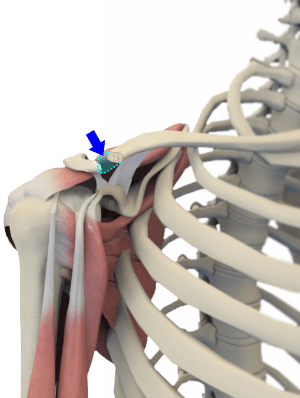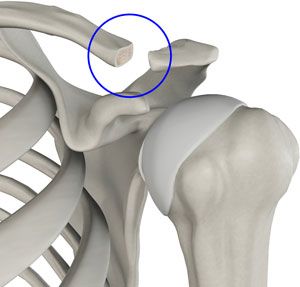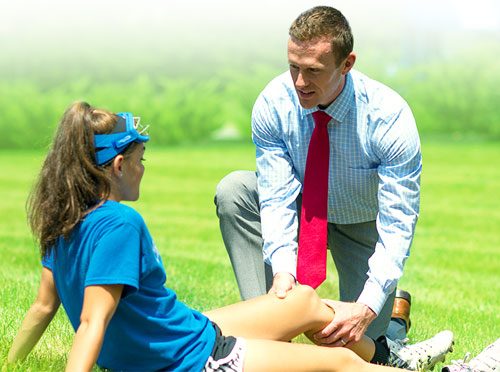Dr. Rice has joined Beacon Orthopedics and Sports Medicine
Congratulations Dr. Rice: 2025 Cincinnati Magazine Top Doctor
Distal Clavicle Excision

The acromioclavicular joint is formed by the medial facet of the acromion and the distal end of the clavicle. Acromioclavicular joint (AC) arthritis may develop as a result of degenerative changes that occur as a part of the normal aging process. This condition causes chronic pain in the AC joint. Initially, non-surgical methods of treatment such as medications and physical therapy exercises will be suggested. Surgical treatment is considered as a last resort when conservative treatment fails to provide adequate pain relief.
Arthroscopic distal clavicle excision is a surgical technique used to treat to arthritis of the AC joint that is non-responsive to conservative treatments. During arthroscopy of the subacromial space, the AC joint is located and the distal end portion of the clavicle is resected so as to create a 1-2 centimeter gap between the acromion and the clavicle. As a result, pain is eliminated because the bones can no more come in contact and rub against each other. Since the ligaments around the bones remain intact, arthroscopic distal clavicle excision does not compromise the strength and stability of the joint.
Arthroscopic distal clavicle excision can be performed either from a direct (superior) approach or from a bursal approach. In the direct approach, the instrumentation and dissection is limited to the intra-articular space only whereas the bursal approach involves the subacromial region and is performed along with acromioplasty, subacromial bursectomy and rotator cuff repair. The direct approach can be used successfully to treat arthritis of the AC joint.
Surgical technique
The procedure will be performed in the beach chair position or while lying down on your sides (lateral decubitus position). After anesthesia is administered, the standard portals for direct arthroscopic procedure are made at 1.5 centimeters anterior and posterior to the AC joint. The joint is localized with the help of 22 gauge needles that are directed from the anterior and posterior. Then normal saline is injected to expand the joint. If the anterior needle allows fluid outflow from the joint, then location of the portal is accurate. Further, skin incisions are made in the desired locations and inspection of the joint is carried out using an arthroscope which is passed through the posterior portal.

The anterior portal is created using a needle and then widened at the joint capsule level with blunt obturator. An instrument called full radius resector is used to remove inflammatory tissue and meniscal remnants. Then, a tissue ablation device is used to expose the distal end of the clavicle entirely, but the capsular attachments are kept intact.
Once the distal end of the clavicle is exposed, any infringing soft tissue will be removed following which resection of the distal clavicle is carried out using a bur. Resection is started from anterior aspect working towards the posterior aspect of the joint. About 6-7 mm of bone will be removed to prevent bone to bone contact. Next, the arthroscope is moved into the anterior joint portal so that the posterior aspect of the distal clavicle and the posterior capsule can be viewed. Then the bur is used through the posterior portal and even resection of the bone is completed. Finally, the portals are closed with nylon suture and dressings are placed.
You will be allowed to perform assisted range of motion exercises within 3-5 days after surgery. A strengthening protocol may be started after 3-4 weeks postoperatively. You can expect complete recovery in 8-10 weeks after surgery.
nodisplay
nodisplay
Shoulder Procedures
- Arthroscopic Rotator Cuff Repair
- Subacromial Decompression
- Acromioplasty
- Distal Clavicle Excision
- Labral Repair
- Bankart Repair
- Biceps Tenotomy
- Biceps Tenodesis
- Arthroscopic Remplissage
- Latarjet Procedure
- Lysis of Adhesions
- Latarjet Procedure
- Coracoplasty
- Subscapularis Repair
- Suprascapular Nerve Decompression
- Pectoralis Tendon Repair
- Coracoclavicular Ligament Reconstruction


